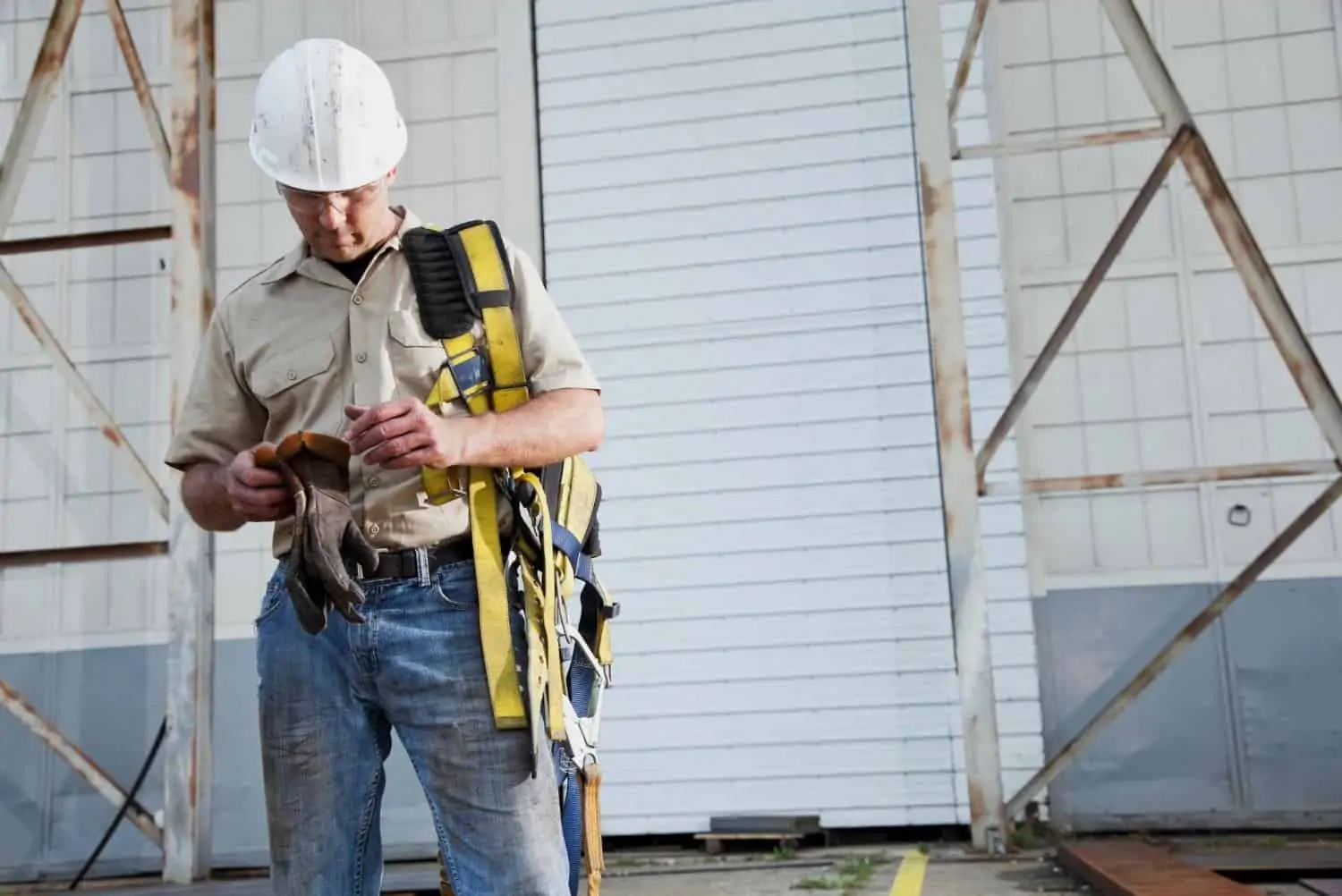The importance of safety harnesses cannot be overstated, because they can save your life from serious falls at high heights. When working in the construction industry, wearing a harness is not optional, and there’s a reason for that. Read on to find out why you need a safety harness.
What Is a Safety Harness?
Safety harnesses are a type of safety equipment used in construction that consists of belts and restraints that wrap around your body to prevent serious injury or death from a fall. Full body harnesses also known as fall arrest harnesses will stop you from falling to the ground when you slip at hazardous heights.
The components of a safety harness include d-rings for fall protection which can be placed in various areas around the body, including the back and the chest. These act as your anchor, which suspends you if you slip and enables you to work with both hands.
You need to make sure your harness is fitted correctly, that you are wearing the proper harness designated for the safety conditions you are working in, and that you are educated on how to properly wear and use the safety harness features.
Benefits of Safety Harnesses
When working at heights that could kill you if you were to fall without personal protective equipment, a harness stops you from falling and distributes the force from the fall to the areas of the body that can safely absorb the impact, which protects the more vulnerable parts of your body.
This fall protection equipment contains padding to cushion your shoulders and legs. Chest and leg straps on the side of a safety harness can be deployed in the event of a fall to prevent suspension trauma.
Suspension trauma or harness hang syndrome is a natural response your body has to being held upright in a harness for too long, which can cause blood to clot in your legs. This can lead to a loss of consciousness, stroke, or death.
Your body only has about 5 to 30 minutes of suspension after a fall before you are at risk for these complications. By releasing the leg straps, you can relieve the pressure on your arteries until you are rescued which can save your life.
Selecting the Right Safety Harness
There are various safety harnesses on the market that all cater to different work environments and safety needs, and can suspend you from different angles. A full-body harness will distribute the force from a fall throughout your entire body and is most commonly seen in construction or other work areas that involve working at very high heights.
Within full body harnesses, there are different types, such as Sit Stand Walk harnesses, which allow you to move while you’re connected to the fall protection system. If you are performing inspections or maintenance, this allows you to remain safe while doing so.
Other harnesses merely involve a positioning belt that wraps around the waist and protects someone working over an edge from falling vertically. Restraint lanyards hook you to a fixed object or piece of equipment. This is common in work that requires climbing up ladders. Twin-tail lanyards give you free mobility vertically and horizontally while you are always connected to an attachment point at all times.
Fall Protection Systems At Conveying & Hoisting Solutions
Any work environment that presents a fall risk requires the use and compliance with safety equipment, including safety harnesses. These can prevent serious injury and death due to several complications from falling at a worksite.
At Conveying & Hoisting Solutions, we offer safety harnesses that are suitable for confined space rescue, construction, ladder work, scaffolding, roofing, and much more. Our safety harnesses are top-of-the-line and are Certified & Approved to AS/NZS 1891.1.
When it comes to fall protection equipment, you want the best. Workplace falls are some of the leading causes of workplace deaths and that comes down to improper safety equipment or improper handling of safety equipment. Shop our collection of safety harnesses today.




